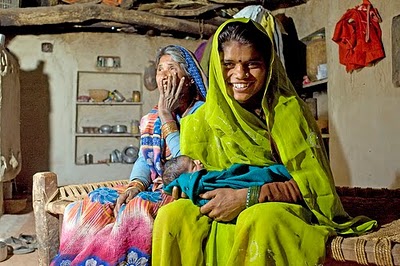Maternal mortality rates in many low income countries, such as
India, are declining, according to a recent
study by researchers at the
Institute of Health Metrics and Evaluation (IHME) at the University of Washington. According to the
report, maternal deaths have fallen from 526,000 a year in 1980 to 342,900 in 2008. This news, while welcoming, has caused dissent among some global health activists who fear donors and policymakers will dismiss the issue and call into question the higher maternal mortality rates
last reported by the United Nations. While concerns over monitoring and evaluation raise important methodology questions, this news must also serve as catalyst for world leaders and donors to take action and recognize that investing in women pays.
The data reported by IHME only concludes what maternal health advocates already know. “We know how to save women’s lives, we don’t need a cure…this is a political problem and political will is essential,” said Theresa Shaver, director of White Ribbon Alliance, at a Wilson Center event in December 2008. Greater funding for family planning and access to emergency obstetric care and HIV/AIDS services should all be included in a scaling up resources for improved maternal health programs. “Without HIV, annual maternal deaths would have been 281,500 in 2008,” said Richard Horton, editor of The Lancet, in last week’s Lancet comments.
Investing in contraception and family planning services through vertical funding mechanisms can reduce maternal mortality rates by addressing all of a woman’s health needs at the time of service. To widen the platform of comprehensive services for women and their families, efforts to link public health services and offer more at one location should be expanded. “Many women have expressed a need for contraception and family planning services…when you offer family planning services on-site with HIV services, you have a huge uptake in family planning use,” shared Michelle Moloney-Kitts, assistant coordinator at the Office of the U.S. Global AIDS Coordinator at a the Wilson Center in December 2009.
Yet political will remains in short supply. “Despite strong advocacy efforts, political leaders have either ignored the call or failed to make the health of women in pregnancy a priority,” stated Horton. Six countries–Afghanistan, Democratic Republic of Congo, Ethiopia, India, Nigeria, and Pakistan–account for over half of all maternal deaths worldwide, and increased investment in these countries will improve maternal health targets, such as Millennium Development Goal (MDG) 5 seeking to reduce maternal deaths by 75 percent.
Progress is possible and “policymakers are more likely to act on issues that they think they can do something about,” said Jeremy Shiffman, associate professor of public administration at Syracuse University, at the Wilson Center in March 2009. The maternal health community must rally around these positive findings and galvanize support for greater financial contributions. “Two decades of concerted campaigning by those dedicated to maternal health is working,” said Horton.” “[G]reater investment in that work is likely to deliver even greater benefits.”
Calyn Ostrowski is the program associate for the Wilson Center’s Global Health Initiative.
Photo Credits: A woman in India safely delivers her baby in the hospital through the Madhya Pradesh Health Sector Reform program. Courtesy Flickr user Department for International Development
 A Publication of the Stimson Center.
A Publication of the Stimson Center.







